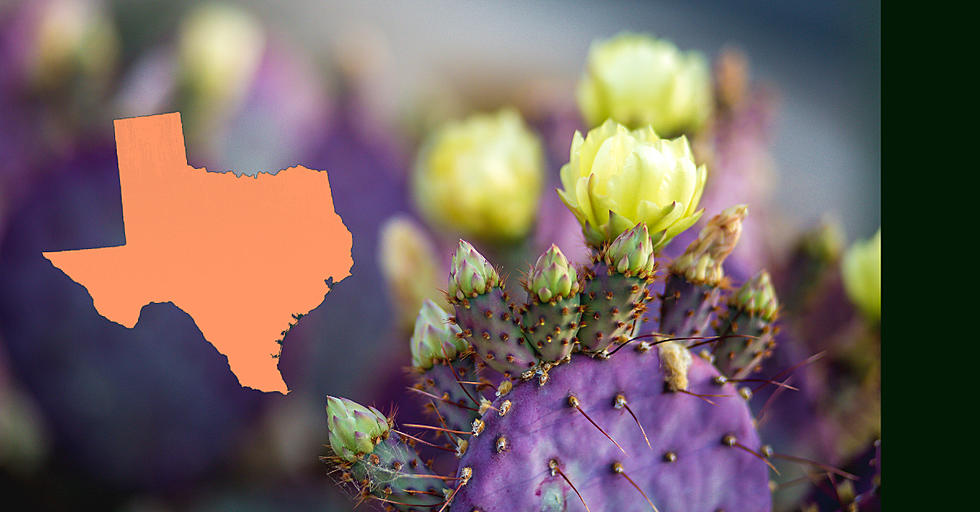
What Are The Top 6 Most Common Cacti of West Texas?
The countryside around San Angelo and West Texas is littered with cacti. It is easy to see a cactus plant growing and think its appearance isn't all that appealing. That might be true most of the time. However, many of the common cacti in West Texas transform into beautiful flowering plants if you know when to look.
Five common cacti grow around West Texas.
It is important to note that the most iconic cactus of all, the saguaro cactus, is not native to Texas. They are mostly found in Arizona. The cacti of West Texas may not be quite as iconic, but many are certainly notable in their own right.
Here are the top five cacti of West Texas.
1) The Prickly Pear Cactus:
This is the most common cactus in West Texas. It was adopted as the official state plant of Texas in 1995. Even so, it is named for the characteristic spines, which are actually modified leaves.
The prickly pear cactus produces pear-shaped fruits known as tunas. The fruits can be eaten fresh or dried and used in many dishes, including jams, jellies, and candies. The pads, or nopales, are often cooked and used in salads, soups, and stews.
One of the most famous uses of prickly pear is to add a fruity or slightly sweet flavor to margaritas. The juice is blended with tequila, lime juice, and a sweetener like simple syrup or agave nectar. Some recipes also include triple sec or Cointreau. This is my favorite flavor of margarita.
2) The Horse Crippler Cactus (Echinocactus texensis)
As the name suggests, this cactus can harm animals and humans. Even so, it is quite beautiful when it blooms. As you can see from Facebook, it is blooming right now. Aside from this, the root of the cactus has been used to treat various ailments, from headaches, stomach aches, and skin conditions.
In Texas, however, it is illegal to harvest, collect or damage horse crippler cacti without a permit or authorization from the Texas Parks and Wildlife Department. This includes both wild populations and those grown in cultivation.
3) The Claret Cup (Echinocereus triglochidiatus)
The Claret Cup has no significant medicinal or culinary uses, but that is just fine. It is one of the most beautiful cacti in the world. It is cultivated for its vivid red, orange, and yellow flowers, which bloom in late spring and early summer. The blooms can last several weeks.
In addition to its beauty, the Claret Cup plays a vital role in the desert ecosystem. The flowers provide nectar and pollen for bees, butterflies, and other pollinators. The spiny stems and fruit provide habitat and food for wildlife such as birds and rodents.
This cactus is also protected in Texas. If you choose to cultivate them, obtaining plants from reputable nurseries that grow them legally is essential.
4) The Lace Cactus (Echinocereus reichenbachii)
This cactus has an appearance not often found in cacti, one of delicacy. It has a delicate, lace-like appearance, characterized by a dense network of fine spines. It is often cultivated as an ornamental plant in rock gardens. Because of its smaller size, it is a popular choice for small gardens that wish to incorporate the natural beauty of the desert.
Like other cacti mentioned here, the Lace Cactus is endangered here in Texas, and its wild harvest or collection is strictly regulated.
5) The Strawberry Hedgehog (Echinocereus engelmannii)
This beautiful cactus is a rare beauty that grows in our West Texas area. Its vibrant flowers and interesting texture characterize it. In Texas, the Strawberry Hedgehog is listed as a species of concern, which means that it is a species that may become threatened or endangered if current trends continue.
6) The Barrel Cactus (Ferocactus spp.)
These cacti can grow to ten feet high and live over 450 years. They are an iconic part of the countryside in West Texas. The cactus is primarily cultivated for its ornamental beauty. It has a unique shape, texture and color that make it very popular in desert gardens.
The Barrel Cactus is not generally considered threatened or endangered, but some species within the genus are protected due to their status as rare or at-risk plants. For example, Coville's Barrel Cactus (Ferocactus covillei) is endangered, and the Fishhook Barrel Cactus (Ferocatus wislizeni) is listed as a species of concern in some areas, including Texas.
I know many of us consider cacti a nuisance, or, even worse, a danger to our health when hiking in West Texas. However, if you happen upon them when they're at their height of bloom, their beauty takes on a rare transcendence. It is truly one of the great things about our part of the world.

